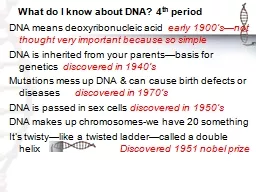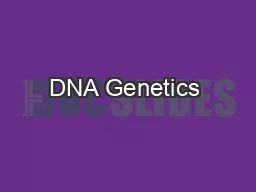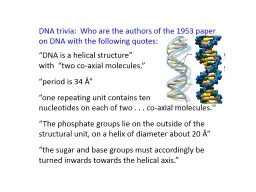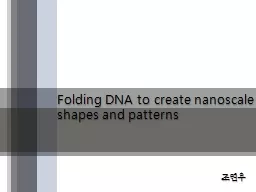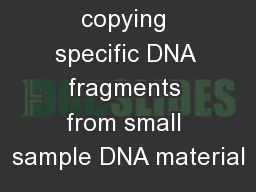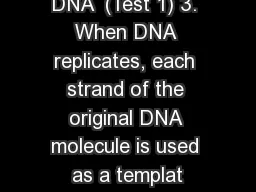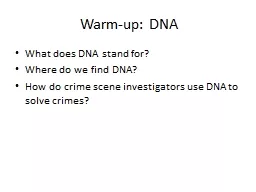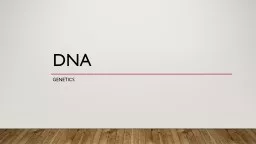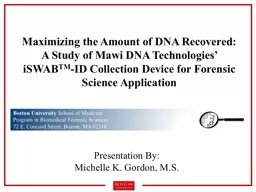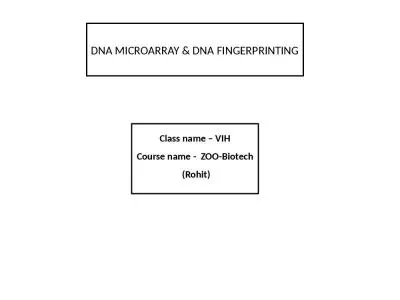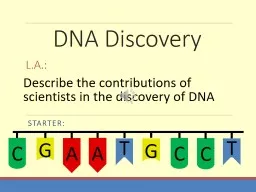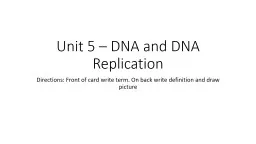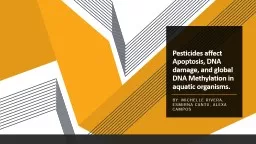PPT-What do I know about DNA? 4
Author : Heartstealer | Published Date : 2022-08-01
th period DNA means deoxyribonucleic acid early 1900snot thought very important because so simple DNA is inherited from your parentsbasis for genetics discovered
Presentation Embed Code
Download Presentation
Download Presentation The PPT/PDF document "What do I know about DNA? 4" is the property of its rightful owner. Permission is granted to download and print the materials on this website for personal, non-commercial use only, and to display it on your personal computer provided you do not modify the materials and that you retain all copyright notices contained in the materials. By downloading content from our website, you accept the terms of this agreement.
What do I know about DNA? 4: Transcript
Download Rules Of Document
"What do I know about DNA? 4"The content belongs to its owner. You may download and print it for personal use, without modification, and keep all copyright notices. By downloading, you agree to these terms.
Related Documents

